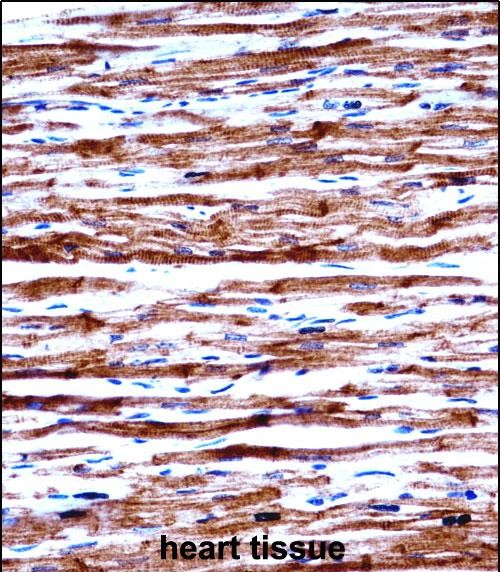POLR2J Antibody (C-term)
Affinity Purified Rabbit Polyclonal Antibody (Pab)
- SPECIFICATION
- CITATIONS
- PROTOCOLS
- BACKGROUND

Application
| WB, IHC-P, E |
|---|---|
| Primary Accession | P52435 |
| Other Accession | Q32P79, NP_006225.1 |
| Reactivity | Human |
| Predicted | Bovine |
| Host | Rabbit |
| Clonality | Polyclonal |
| Isotype | Rabbit IgG |
| Calculated MW | 13293 Da |
| Antigen Region | 89-117 aa |
| Gene ID | 5439 |
|---|---|
| Other Names | DNA-directed RNA polymerase II subunit RPB11-a, RNA polymerase II subunit B11-a, RPB11a, DNA-directed RNA polymerase II subunit J-1, RNA polymerase II 133 kDa subunit, POLR2J, POLR2J1 |
| Target/Specificity | This POLR2J antibody is generated from rabbits immunized with a KLH conjugated synthetic peptide between 89-117 amino acids from the C-terminal region of human POLR2J. |
| Dilution | WB~~1:1000 IHC-P~~1:10~50 E~~Use at an assay dependent concentration. |
| Format | Purified polyclonal antibody supplied in PBS with 0.09% (W/V) sodium azide. This antibody is purified through a protein A column, followed by peptide affinity purification. |
| Storage | Maintain refrigerated at 2-8°C for up to 2 weeks. For long term storage store at -20°C in small aliquots to prevent freeze-thaw cycles. |
| Precautions | POLR2J Antibody (C-term) is for research use only and not for use in diagnostic or therapeutic procedures. |
| Name | POLR2J |
|---|---|
| Synonyms | POLR2J1 |
| Function | Core component of RNA polymerase II (Pol II), a DNA-dependent RNA polymerase which synthesizes mRNA precursors and many functional non-coding RNAs using the four ribonucleoside triphosphates as substrates. |
| Cellular Location | Nucleus. |
| Tissue Location | Ubiquitously expressed. High expression was found in heart and skeletal muscle. |

Thousands of laboratories across the world have published research that depended on the performance of antibodies from Abcepta to advance their research. Check out links to articles that cite our products in major peer-reviewed journals, organized by research category.
info@abcepta.com, and receive a free "I Love Antibodies" mug.
Provided below are standard protocols that you may find useful for product applications.
Background
This gene encodes a subunit of RNA polymerase II, the polymerase responsible for synthesizing messenger RNA in eukaryotes. The product of this gene exists as a heterodimer with another polymerase subunit; together they form a core subassembly unit of the polymerase. Two similar genes are located nearby on chromosome 7q22.1 and a pseudogene is found on chromosome 7p13.
References
Michiels, S., et al. Carcinogenesis 30(5):763-768(2009)
Oh, J.H., et al. Mamm. Genome 16(12):942-954(2005)
Shpakovskii, D.G., et al. Bioorg. Khim. 30(6):621-625(2004)
Zhou, M., et al. Proc. Natl. Acad. Sci. U.S.A. 100(22):12666-12671(2003)
Kaehlcke, K., et al. Mol. Cell 12(1):167-176(2003)
If you have used an Abcepta product and would like to share how it has performed, please click on the "Submit Review" button and provide the requested information. Our staff will examine and post your review and contact you if needed.
If you have any additional inquiries please email technical services at tech@abcepta.com.





